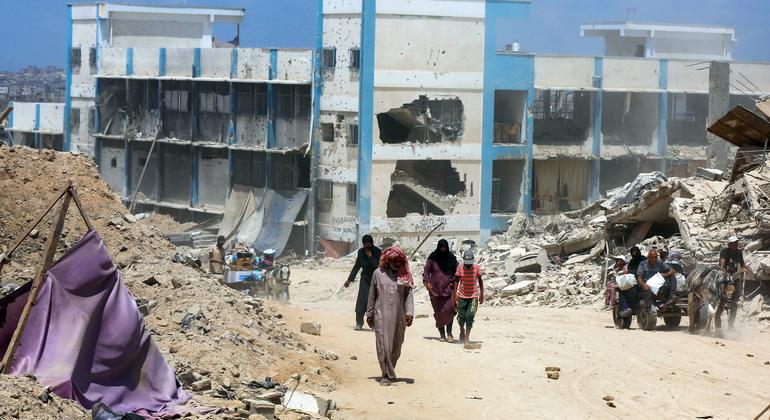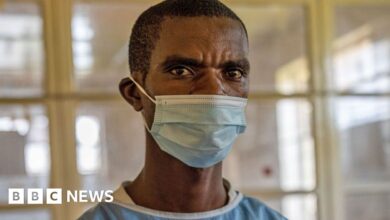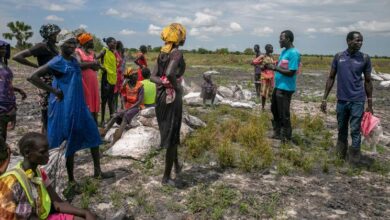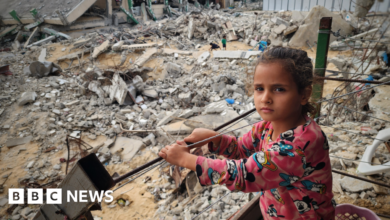Gaza: UN warns of worsening humanitarian disaster as ceasefire talks continue


A spokesman for the UN secretary-general told reporters at a regular press briefing in New York on Monday that Mr Guterres spoke with the Qatari prime minister yesterday.
“He has been briefed on the situation and will be in close contact and kept updated,” UN spokesman Stéphane Dujarric said.
The talks, backed by Egypt, Qatar and the United States, are expected to resume on Wednesday or Thursday in Cairo, following a two-day meeting involving the three countries and Israel in Doha last week.
“The Secretary-General very much hopes that all parties concerned will find the political courage, the political will to come to an agreement. “For the good of the people of Gaza, for the good of the people of Israel, for the good of the hostages,” Mr. Dujarric added.
‘Dire situation’
The already dire situation in Gaza is worsening amid continuing waves of displacement, combined with overcrowding, insecurity, crumbling infrastructure, intense fighting and limited services, a UN spokesman said.
Gaza has been under intense Israeli military attacks since the brutal October 7 terrorist attack by Hamas and other Palestinian militant groups on communities in southern Israel that left some 1,200 people dead and more than 200 taken hostage.
As of August 9, 115 hostages remained, including several declared dead and whose remains remain in Gaza.
According to the Gaza Health Ministry, the offensive has killed more than 40,000 Palestinians in the enclave, mostly women and children, and injured more than 92,000. In addition, nearly 90 percent of the population has been displaced – many forced to move multiple times.
‘Increasingly concentrated’ population
“OCHA [the UN Office for the Coordination of Humanitarian Affairs] warning that Ongoing fighting, persistent evacuation orders and severe shortages of essential goods are making it increasingly difficult for displaced families to access basic services. where they come from,” said Mr. Dujarric.
He added that since October last year, 86 percent of the Gaza Strip – some 314 square kilometers – had been ordered evacuated.
“As you may know, Gaza’s population is increasingly concentrated in an area designated by the Israeli authorities in Al Mawasi, where Palestinians are required to go,” he said, noting that according to OCHA, the area’s population density has skyrocketed to between 30,000 and 34,000 people per square kilometer, compared to an estimated 1,200 before the war.
‘Severe’ fuel shortage
Severe shortages of fuel and medical supplies continue to disrupt the operations of remaining hospitals and primary health care centers.especially in northern Gaza, OCHA reported in a humanitarian news on Monday.
The article quoted the director of Al Awda Hospital in northern Gaza as saying that all surgeries had been postponed and there was an urgent call for fuel supplies to prevent more deaths at the facility.
The situation is also dire at Kamal Adwan Hospital, where shortages of fuel and medical supplies are said to be threatening vital functions, OCHA noted, adding that the United Nations World Health Organization (WHO) and partners are working to transport fuel to these facilities.
Furthermore, on Sunday, the Palestinian Red Crescent Society (PRCS) warned that its ambulances, emergency medical clinics and relief services may have to stop operating in northern Gaza due to a lack of fuel. Its teams were operating at minimal capacity and only two of its eight ambulances were operational, it added.




